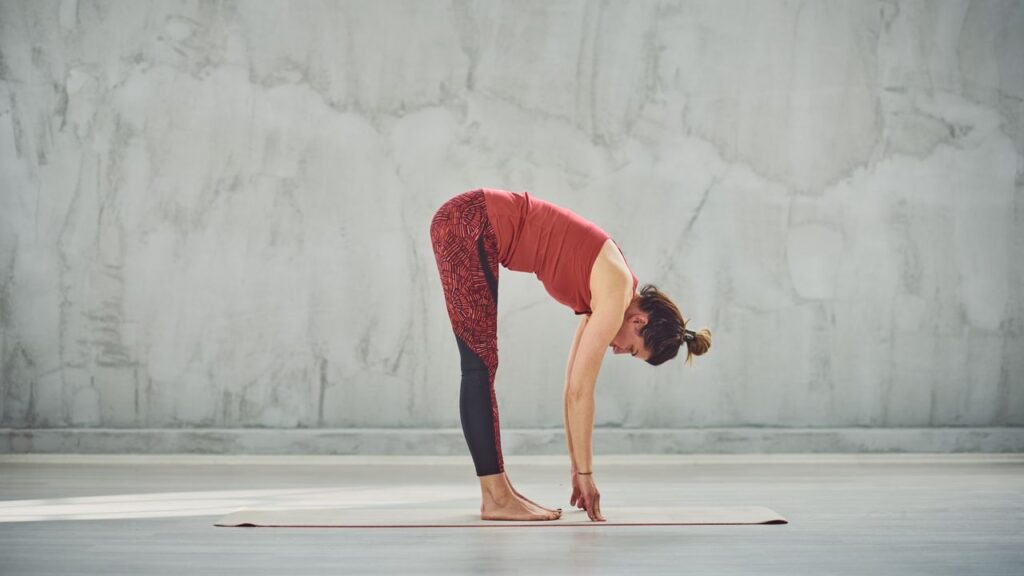
The Pilates roll-down has emerged as a popular two-minute exercise touted for its ability to reset the spine and enhance overall mobility. This movement, rooted in the original teachings of Joseph Pilates, is designed to articulate the spine gently while engaging core muscles. According to Abby McLachlan, founder of the Pilates and yoga studio East of Eden, this simple exercise serves to improve posture, release tension, and foster a sense of calm, making it an ideal addition to any Pilates routine.
Understanding the Pilates Roll-Down
The roll-down is a straightforward exercise, yet there are specific techniques to maximize its benefits. To perform the roll-down, begin by standing with your feet hip-distance apart. Gradually articulate your spine forward, allowing your arms to hang loosely. As you lower your fingertips toward the floor, feel free to bend your knees as necessary until you achieve a full forward fold.
“It is actually part of an exercise in Joseph Pilates’ original 34, where it is paired with a push-up once you reach the floor,” McLachlan explains. “Today, the roll-down is often practiced at the beginning or end of a class, serving as an effective reset for the spine.”
Benefits of the Pilates Roll-Down
The advantages of the Pilates roll-down extend beyond spinal flexibility. McLachlan notes, “It’s an excellent exercise for spinal flexion and mobility. It also engages the abdominal muscles to control the movement, which can alleviate back and neck tension.” Many Pilates instructors observe improvements in their clients’ movement patterns when they perform a roll-down.
Additionally, the roll-down is valuable for enhancing overall posture and alignment. As McLachlan states, “As a Pilates teacher, you can gain insights into a person’s movement by simply asking them to perform a roll-down.”
Tips for Proper Form
To achieve the best results from the roll-down, McLachlan emphasizes maintaining even pressure across the feet while standing hip-width apart. She advises that knees should be soft or slightly bent, avoiding hyperextension. Keeping the ribs knitted in and down, shoulders back, and chin tucked in—similar to creating a double chin—ensures the head remains aligned with the spine.
Breathing plays a crucial role during the exercise. McLachlan recommends initiating a lateral breath by inhaling through the nose to expand the ribs sideways. On the exhale, visualize a corset tightening around the ribs while engaging the pelvic floor. As you begin to articulate your spine forward, focus on moving each vertebra one at a time, using your core to guide the motion.
McLachlan suggests visualizing moving over a beach ball or feeling a gentle push in the stomach to encourage a rounded spine as you fold forward.
Daily Pilates Practice
Individuals often wonder about the effects of daily Pilates practice. McLachlan asserts that engaging in Pilates regularly can significantly enhance posture, core strength, and stability. “Daily Pilates contributes to improved mobility and flexibility. The emphasis on breathing also fosters better breathing patterns in daily life, reduces stress, and may enhance sleep quality,” she adds.
Daily practice is considered safe and can be combined with other forms of exercise, such as walking, weight training, or yoga. While rest days are important, McLachlan notes that even on rest days, performing a few roll-downs or spinal rotations can be beneficial. “It doesn’t have to be time-consuming. Just three repetitions or a few minutes can be effective.”
The Pilates roll-down stands out as a simple yet powerful exercise that can be easily incorporated into any fitness routine. Whether you are an experienced practitioner or new to Pilates, this two-minute movement offers a refreshing reset for your spine and enhances overall well-being.






